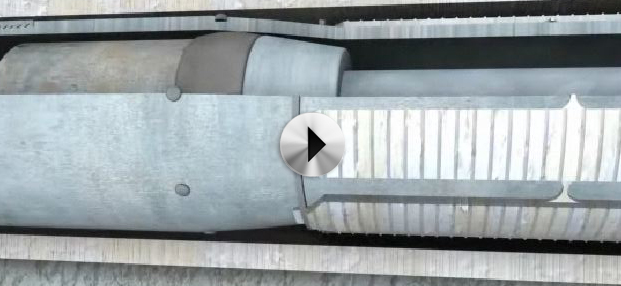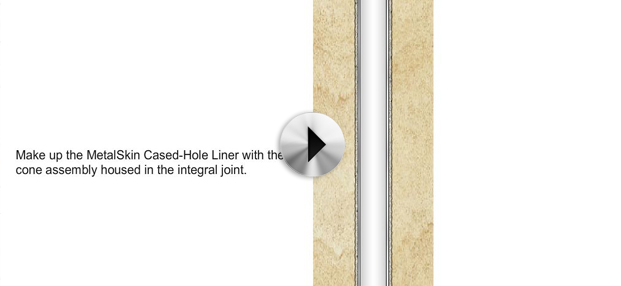Expandables to the rescue in shale refracs, trouble zones, long-reach wells
By Katie Mazerov, contributing editor
While they are hardly new on the oil and gas completion front, expandable technologies are coming of age when highly deviated, mature and depleted wells are the norm and when deep, high-pressure/high-temperature (HPHT) wells are no longer out of reach. As operators exploit resources once deemed unobtainable, expandable liner systems and casing patches are emerging as standard tools of the trade.
“Historically, expandable products have been a premium product with a large price tag,” said Scott Benzie, vice president of engineering and technology for Mohawk Energy, which develops, manufactures and installs solid expandable tubular products.
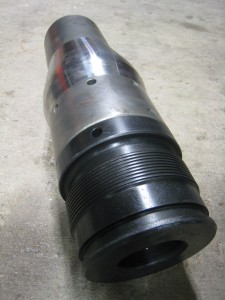
The company expects to launch its new MetalPatch product for cased-hole completions early this year. The technology provides a metal-to-metal seal between the primary casing and an expanded patch.
“Our goal is to provide a mainstream product for cased-hole patching,” Mr Benzie said.
The patch is designed for well integrity issues, such as patching failed completion equipment, or connections, and re-lining of wells with corrosion or perforations along both short and long intervals. The patch is installed inside the casing anywhere from 30 ft to 6,000 ft in length.
“We believe the metal-to-metal feature will be a game-changer because it eliminates the need for elastomers or rubber, which can degrade over time,” he continued. “All elements of the patch use metal-to-metal sealing technology, both for the upper and lower seals and the premium threads on each joint. Also, the product can work within the tolerances of the customer’s API casing, by use of a proprietary compliant sealing system, allowing reliable sealing for variations in API inner diameters.”
The initial target market for the technology is North American land operations, where the patch can be used when frac valves fail, or simply patching leaking connections in cased-hole completions. “We have done extensive testing, including through-pressure and axial load cycle testing,” he said.
A future application would be re-fracking operations in the US shale gas market where the operator needs to re-line existing perforations in the completion with a patch that has high-pressure capability. “The MetalPatch product provides high-pressure and -temperature capabilities, allowing future re-fracking operations,” Mr Benzie said. “One additional advantage is that it can run through nipple restrictions and set the patch below, saving time for the operator as no milling is required to deploy the patch.”
Unconventional shale applications
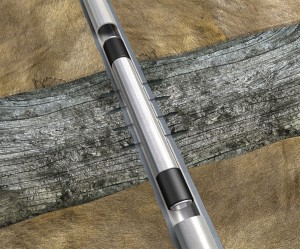
Weatherford International’s MetalSkin solid expandable cased-hole liner system is increasingly being deployed for wells requiring re-entry, re-fracturing and isolation, particularly in unconventional shale formations. The liner, which has a thick wall and a high burst-and-collapse rating, can be used in highly pressurized wells and is being developed for multiple casing sizes. The system was adapted for today’s market from the HOMCO internal steel liner casing patch, a thin-wall patch that has been used for nearly 50 years and is still a solution for repairing mature wells that are not highly pressurized.
“We’re seeing a lot of scenarios in wells that have been producing for 10, 15, 20 years where a zone has become depleted but the operator has identified a new formation,” said Asim Siddiqui, business development manager, North America. “With new solid expandable liner technology, we are able to isolate that depleted zone and achieve a larger internal diameter (ID) for maximum completion size, instead of using a straddle packer or conventional liner that results in a smaller ID and thus lower production.”
Another application is maintaining casing integrity in mature wells that were not cemented all the way to surface and are encountering corrosion problems, or where the old casing has eroded because of the well environment.
“We can run an expandable liner that will cover up the section that is corroded, patch it and still complete the well with full integrity and maintain a larger ID,” Mr Siddiqui said.
The system was used to repair corrosion damage in two long 7-in. casing intervals in a 57-year-old well in north central Texas. Production was brought back online eight days after the liners were expanded and pressure-tested, serving as an alternative to the conventional squeeze method that had failed six times on the well.
Advanced liner technology also has proved effective in isolating depleted or nonproductive zones in horizontal wells in shale plays such as the Bakken and Marcellus.
“Typically the casing size is 4 ½ in. so we can easily cover up the nonproducing zone with the thin-wall internal casing patch, allowing the operator to re-frac or re-stimulate other zones for production,” Mr Siddiqui said. In one case, where the operator needed to isolate multiple zone-fracking sleeves and packers, nine different internal casing patches were installed in each zone so the operator could perforate and frac through the casing.
The newest repair application of the MetalSkin liner will be a 3 ½-in. expandable liner that expands inside 4 ½-in casing. “This will be ideal for corrosion repairs in depleted formations and in re-fracturing or re-stimulation operations that use 4 ½-in. casing,” Mr Siddiqui said. “Using conventional liner in these cases can significantly reduce ID, treating pressures and production.”
Weatherford has invested a significant amount of time and effort in developing its own expandable liner connection, Mr Siddiqui said. “For example, for a 200-ft zone, instead of running multiple expandable liners, we can isolate the zone with a 300-ft liner in one run, resulting in fewer trips into the well and less personnel,” he explained.
While the system is commonly used in onshore North American operations, it is suited for deepwater applications because it does not significantly reduce the casing size, Mr Siddiqui said. A 7 5/8-in. expandable liner was used to repair a leak in 9 5/8-in casing in a 20-year-old North Sea well. The system eliminated the need to cut or mill out more than 6,000 ft of casing, saving the operator significant time and $6 million in costs, and extending the life of the well.
For larger casing sizes, the HydraSkin solid expandable system has been used for deepwater operations. A major operator in the Gulf of Mexico used the liner in a deviated well where multiple trips in and out of the well had caused damage to two long laterals in the 13 3/8-in. casing. Two sections of HydraSkin liner were installed in five days, resulting in improved pressure integrity and providing a whipstock seat for a sidetrack well.
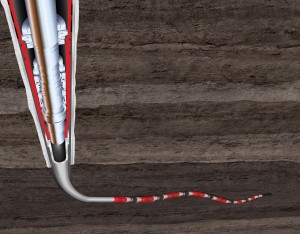
Achieving maximum compression
Expandable systems are being used in deviated and extended-reach wells where operators face huge challenges. Halliburton’s VersaFlex expandable liner hanger (ELH) system includes the breech lock technology that was designed specifically for extended-reach operations. The system set a record in helping an operator gain 175,000 lbs of compression to reach bottom in a well in the Bakken play in North Dakota. “With that kind of compression, it’s not hard to imagine there are obstacles to reaching needed depth,” said Ron Nida, strategic business manager for ELH systems.
“Pushing 20,000 ft of liner string with more than half of it loaded down by production equipment while transitioning tortuous geometry and fighting gravity and friction is a real challenge for our operators in the Rockies,” he continued. “When customers add swellable packers and hydraulic fracturing equipment to the horizontal stretch, extreme drag against jagged edges, ledges and seats from previous drilling requires extreme compression at the liner top. Running along the floor of a horizontal, open hole, operators also work against geological anomalies, swings and dips in the wellbore.”
The breech lock system takes its name from the bolt action rifle, which uses lugs at the front of the breech so that the force of compression focuses in the bullet (in this case, the liner), toward the chamber (open hole), Mr Nida explained. The system can handle up to 200,000 lbs of weight-down compression in the 5 in.-by-7 in. tool size.
Deepwater environments, where heavily faulted or fractured intervals can cause unstable conditions in the face of high equivalent circulating densities (ECD), pose different challenges for operators. These low-gradient formations are high risk for fluid loss, explained Abdolreza Gharesi, ELH product manager for Halliburton. “Pressure regression from depleted zones or geological phenomena may compromise borehole stability, causing fluid loss into the formation, and possibly resulting in a loss of the well if circulation is not achieved,” he said. Such conditions are often found in mature wells and in overpressured formations in deepwater.
The VersaFlex ECD system was developed to maintain circulation and keep pressure off unstable formations. The ECD hanger, designed with a small outer diameter (OD) with no inner-diameter restrictions, increases the flow path between the previous casing and the hanger body so that mud and fluid are circulated out of the hole at a rate that takes pressure off the formation but keeps mud weights high enough for safe debris removal, Mr Gharesi said. “With more room in the bypass area, the formations are less likely to take on fluid, and assist in maintaining circulation.”
Field tests indicate the system reduces pressure drop across the liner top during circulation and cementing. “Reduced pressure is achievable within a wide range of mud weights,” he continued. “This is accomplished by the highly reduced OD not found on industry-standard liner hanger equipment.”
The increased bypass area also allows faster trip-in speeds and opens perimeters previously limited in drill-in with liner applications, he noted.

Troubleshooting lost circulation
Baker Hughes has used its expandable liner hanger system, TORXS, to facilitate completions in several offshore oil and gas wells, including HPHT wells operated by PEMEX in the aging Cantarell and Littoral Tabasco reservoir of the Bay of Campeche.
“The TORXS system was designed for extreme applications such as high-pressure wells that have depleted or lost circulation zones and thus require a larger bypass area,” explained Maurilio V Solano, Baker Hughes’ global casing/liner drilling product line manager. “If we can achieve good bypass in the trouble zone, we can circulate under better conditions due to less ECD and less pressure on the annular area,” he said.
The one-trip, hydraulically balanced expandable hanger system provides high torque capability for reaming or drilling while maintaining moving mechanisms inside the liner hanger assembly, not in the annulus like standard Baker Hughes liner hangers.
“A huge benefit of the system is the torque capability and the ability to rotate the system up to 100 RPM,” Mr Solano said. “Conventional liner systems reach a point where they can’t continue to go deeper and can only be pushed in an attempt to make it to TD. The TORXS system allows you to rotate at high torque rates, which keeps the liner moving to bottom.”
to TD. The TORXS system allows you to rotate at high torque rates, which keeps the liner moving to bottom.”
Another benefit, he continued, is that the internal pressure can be higher without presetting or releasing the hanger.
“With standard systems, we have the obstacle of not being able to go above 1,800 psi, meaning we can’t get circulation rates high enough for good hole cleaning and cuttings removal,” he said. “With this technology, we can clean out the hole using a high pump rate and high circulation pressures, resulting in a good cement job. If we were to lose all circulation, anything we pump downhole would be lost, leading to stuck pipe, lost rig time and sidetracks, resulting in a huge loss in time and money. However, the benefits gained by running the TORXS system allow better operating conditions in difficult wells, like the ones at Campeche’s Bay.”
For PEMEX, the liner drilling system was deployed in two offshore fields. In the more challenging case, stuck directional drilling tools and leaking of diesel-based mud into the formation were causing fluid loss. The fluid level was at 4,265 ft, forcing the operator to consider abandoning the well. The TORXS expandable hanger, with its high torque capability and better bypass area, used in conjunction with an 8 ½-in. EZCase bit, allowed the liner to be deployed through a window and lost-circulation zone to reach bottom.
After drilling through the trouble zone with the liner, PEMEX was able to drill the next section with seawater, resulting in savings due to a reduction in diesel-based mud and drilling time.
In another well in the same area, the expandable hanger system was used to hang 8,860 ft of liner through a window and through the lost-circulation zone in a 64° deviated well and drill down with the liner the last 243 ft.
The second field, which involved an HPHT reservoir from 15,000 ft to 18,000 ft, used these systems to ream the liner to bottom in long horizontal sections. The hanger-setting mechanism is located in the liner hanger running tool and not in the landing collar like some conventional liner systems. This allows easier manipulation and operation of the running string in these horizontal sections, according to Baker Hughes.
“It was necessary to drill with the liner at Cantarell field, beneath the Bay of Campeche in Mexico, so we could set the casing at the base of the Lower Paleocene before touching the fragmented Breccia formation,” said Uriel J Perez Ramayo, drilling superintendent for deepwater operations for PEMEX.
“This was essential because this zone is drilled with complete lost circulation due to wellbore collapse at the upper end of the formation.
Another drilling challenge is the transition zone, which has some water swellable shales that make drilling with water nearly impossible.
“That is why liner drilling becomes a key factor,” Mr Perez Ramayo continued. “It was necessary to bypass and case this transition zone with diesel-based mud but continue drilling the next section with seawater as a mud system. This translates to cost savings and reduced drilling time; typically from 50 days to about 10 to 12 days on that section. Drilling with diesel-based mud is not only expensive, but the lack of diesel-based mud supplies due to bad weather or the short supply of diesel increases the drilling costs tremendously.”
Mr Solano believes that completing these wells would have been more challenging to PEMEX without this technology. “As wells become increasingly complex, more operators are requiring this type of technology,” he said.
MetalSkin and HOMCO are registered terms of Weatherford International Ltd. HydraSkin is a trademarked term of Weatherford International Ltd.
VersaFlex is registered term of Halliburton. TORXS and EZ Case are trademarked terms of Baker Hughes.

